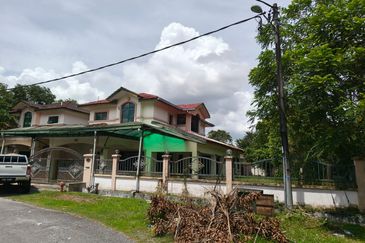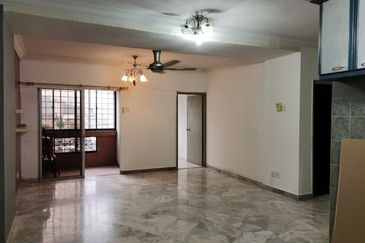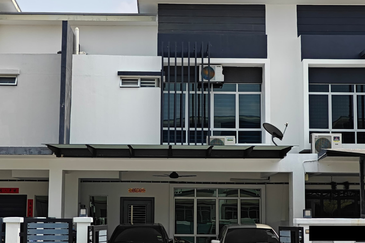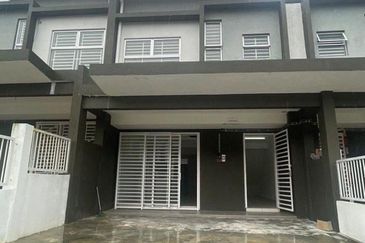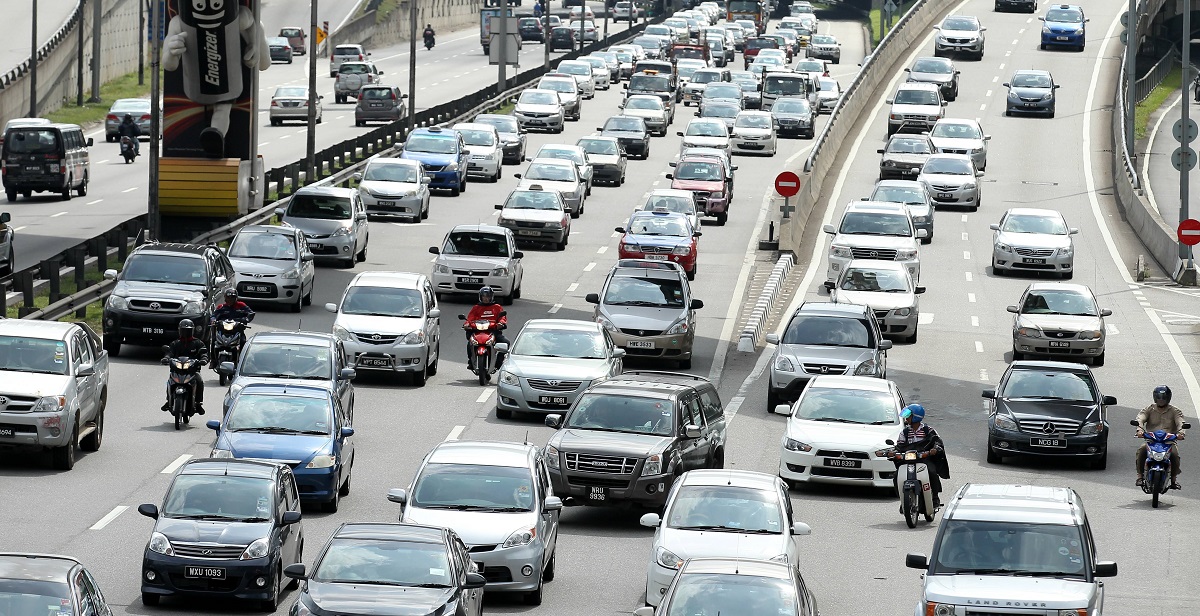
One of the most important attributes of a liveable city is undeniably its connectivity and accessibility.
 In TheEdgeProperty.com-Lafarge Happiness in the City Index 2017 survey conducted recently, the 1,796 respondents from the Klang Valley, Penang and Johor Bahru had ranked the existence of an integrated transportation system as the most important attribute of a liveable city, ahead of other aspects including high-quality housing, beautiful buildings, being environmentally friendly and having higher income and job opportunities.
In TheEdgeProperty.com-Lafarge Happiness in the City Index 2017 survey conducted recently, the 1,796 respondents from the Klang Valley, Penang and Johor Bahru had ranked the existence of an integrated transportation system as the most important attribute of a liveable city, ahead of other aspects including high-quality housing, beautiful buildings, being environmentally friendly and having higher income and job opportunities.
That result should not surprise us as more than 80% of the survey respondents also revealed that they are currently depending on their own transport in the form of personal cars to travel around the cities they are living in. Among the Klang Valley respondents, only 7% of them used public transportation, such as the light rail transit (LRT), taxis and buses. To say that public transport is still not widely used in the country’s most established major urban centres of Kuala Lumpur, Penang and Johor Bahru is perhaps an understatement.
While the reasons for low public transport usage in the city could be varied, transportation planning consultant Goh Bok Yen tells TheEdgeProperty.com that the core reason, in his opinion, is that the masses themselves have never given the public transportation system a good chance to grow.
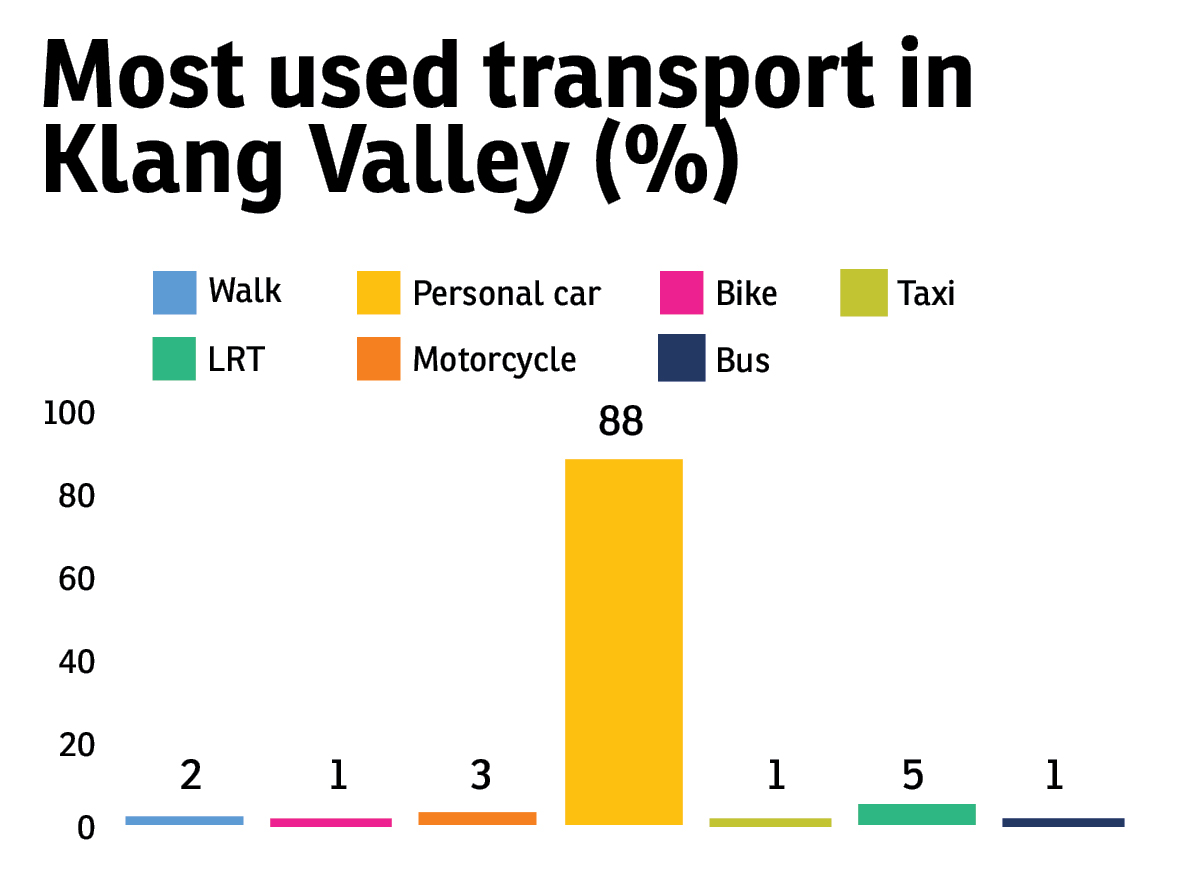

“A good transportation system is important to a city because it has a direct impact on the mobility of its citizens. It also has an impact on national economic growth. It is more impactful than many would imagine,” Goh says.
“As the capital of Malaysia, KL’s public transportation planning has been neglected for decades. If you ask what the consequences of poor public transportation planning are, look at KL today. This is the accumulated consequences of the past 25 years.”
He points out that the public has been encouraged to use personal transport with affordable automobile prices, subsidised fuel/petrol, easy access to car parks and with more highway projects being approved and built, over the past 25 years. “Our society is so comfortable using their own mode of transport to travel around until now when more and more people are moving into the city and the road system can barely cope with the amount of traffic.”
In 2010, the government announced the Greater KL public transportation master plan under the 10th Malaysia Plan, aiming to boost more public transport usage by introducing the mass rapid transit (MRT) lines, the extension of the existing LRT lines and by enhancing the city bus system.
The first MRT line or the Sungai Buloh-Kajang Line is 51km long and has 31 stations. It will be fully operational by July 17, 2017. The first phase from Sungai Buloh to Semantan with 12 stations was completed and has been in operation since December 2016.
Besides that, the LRT Kelana Jaya Line has added 13 new stations while the LRT Ampang Line has added 12 new stations since June 2016.
While more transit lines and new stations have been added, the Klang Valley traffic does not seem to have improved.
“We are talking about a problem that has been accumulating for the past 25 years. It will be a miracle if the traffic congestion on our city roads can be resolved in the next five to 10 years. For me, if we can achieve the national target of having 40% of the public use public transport in the next 20 years, that would already be a great achievement,” Goh says.
Balance and coordination
Goh points out that the public transportation system should not be implemented in a silo and should not be the only focus in efforts to solve the traffic problems in the major cities of Malaysia including KL, Johor Bahru and Penang.
“A good transportation system is more than just about its public transportation alone. The first thing that the government should do concurrently when building more transport infrastructure is to divert private transport usage to public transport,” he shares. To do that, he suggests that the cost of owning private transport and the cost of parking in city centres should be increased gradually. New highways should also not be approved without careful consideration. And most importantly, the current public transport quality has to be improved.
“The MRT, bus or LRT transport systems will not be effective forms of public transport if they are not connected to each other. The MRT should not be seen as the saving grace. It will not work well if it is not well connected with feeder buses or if the feeder buses are not on time or well-coordinated with the timing of the train stops.
“It will also not work well if the number of private cars in the city centres continue to go up. The public transportation system is a system — it will only work if every module plays its role in the right position,” Goh stresses.
Hence, to have an effective public transport system, there is a need for precise coordination and connectivity.
He warns that the Greater KL transportation master plan may fail if the above-mentioned adjustments are not implemented by now. “We may end up like Bangkok, which has an amazing mass transit line route but the road traffic is still bad.”

There is no denying that one of the main stress factors among urbanites is having to deal with traffic.
Traffic congestion and the constant din and mess from road and public transport infrastructure construction works can negatively affect the mental health of road users.
“About four years ago, I predicted that KL city centre will be a huge construction site that is noisy, dusty, messy and congested due to poor road system. It is definitely not a good environment for its citizens to work and live in,” Goh says.
TheEdgeProperty.com-Lafarge Happiness in the City Index 2017 found that about 54% of respondents in the Klang Valley feel stressed out living there. Interestingly, respondents from Penang and Johor Bahru are experiencing comparatively much less stress at 7% and 17%, respectively. There are many possible reasons for that, but that’s another story. The main thing to note is that a majority of respondents in all three states agree that an integrated transport system is critical to a city’s liveability.

“A successful transportation system is something that every citizen would welcome. At the same time, green spaces and green environment should not be sacrificed. After all, we are formulating a system and an environment for better city living and a happier city life for the next generation,” offers Goh.
It it thus imperative that we take action now to make the city a happier place to live in.
This story first appeared in TheEdgeProperty.com pullout on June 30, 2017. Download TheEdgeProperty.com pullout here for free.
TOP PICKS BY EDGEPROP

Taman Melawis (Taman Heng Luen)
Klang, Selangor

Chimes @ Bandar Rimbayu
Telok Panglima Garang, Selangor

Commerce One
Jalan Klang Lama (Old Klang Road), Kuala Lumpur
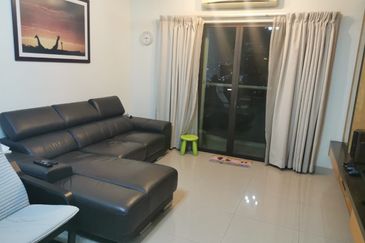
Saville Residence
Jalan Klang Lama (Old Klang Road), Kuala Lumpur

City of Green Condominium
Seri Kembangan, Selangor

Desa Green Serviced Apartments
Taman Desa, Kuala Lumpur

Taman Sri Putra, Sungai Buloh
Sungai Buloh, Selangor



